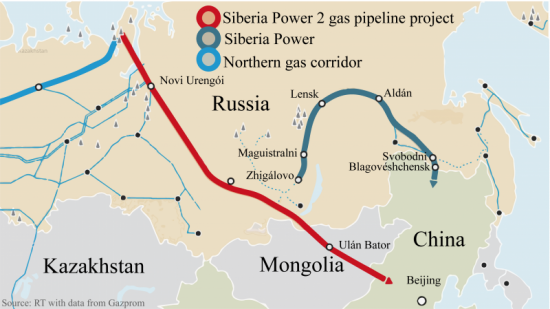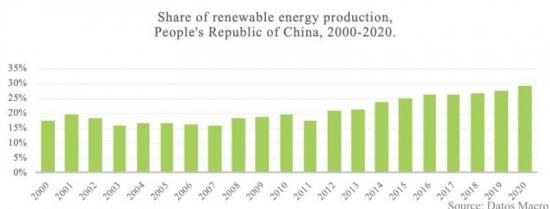According to the most recent 2020 data, the People's Republic of China is the world's most considerable emerging powerand the second-largest country in GDP (14 trillion current dollars). It has a population of 1.4 billion and is the world's largest producer of electricity (7.8 terawatt-hours). It is also the world's largest CO2 emitter (10668 million tonnes of CO2), with coal as its primary source and the most significant gas importer. The country's mode of electricity generation is globally crucial for these reasons. This analysis will focus on the importance of power generation in the People's Republic of China (PRC) concerning its sources and the ongoing actions to change its energy mix.
The PRC's decisions, both in energy and other aspects, are vital to humankind, as they can guide other countries to decide what actions to take. The PRC has four important energy features:
- High energy intensity,
- Dependence on coal,
- Increasing gas imports, and
- Increasing oil imports.
As a result of the COVID-19 pandemic, the question of self-sufficiency emerged as China's electricity production was eroded. An energy crisis occurred between 2020 and 2022, causing blackouts and electricity rationing across the country, mainly on the east coast. The most significant one was in 2021, when the reactivation of post-confinement industries caused an increase in electricity demand with effects on coal prices, leading to coal shortages. In response to these events, the Chinese government forced electricity distributors to cut off hourly supply to factories and households. Despite being in the process of energy substitution to meet international environmental standards, this indicates a solid Chinese dependence on coal.
Globally, fossil fuels (coal, gas and oil) account for three-quarters of global energy. Coal has been displaced in recent years by other energy sources, but it is still the source of 25% of the energy used worldwide. One of the lesser polluting energy alternatives is gas.
The PRC and Russia have had agreements in recent years on energy and especially on gas supplies:
- In 2014, they signed an agreement estimated at $400 billion over 30 years and the construction of the "Siberia Power" gas pipeline.
- In 2019, a second pipeline ("Siberia Power 2") was agreed to supply the Asian country with an additional 30 billion m3 per year.
- Recently, in February 2022, the People's Republic of China and Russia have signed an agreement to increase gas supplies to the Asian giant through a new pipeline called "Soyuz Vostok", which will be the extension of "Siberia Power 2".

This recent agreement will allow for additional 10 billion m3 per year to the Asian country for the next three decades. The relationship between the two Asian superpowers increased instability (both energetically and politically) in the West, given the agreement’s publication the day after the invasion of Ukraine. The deal provides Russia with a counterweight to long term economic sanctions. The rapprochement between the United States and the old continent due to the events in Ukraine to punish its leading gas supplier at the same time opens for an increase of the US share of Europe's gas market. The US entered Europe’s gas market in 2019 in a major way. Despite environmental standards, greenhouse gas emissions continue to rise worldwide, and no superpower takes the issue seriously because they all want a growing gas market share.

China generates more renewable energy than Europe. The following graph shows the share of energy production from renewable sources in the PRC. The graph shows that the percentage share of renewable energy continues to grow. It is higher in absolute terms than that produced by the European Union and has maintained a share of over 25% in the last five years. Even so, its carbon emissions remain high, and its dependence on fossil fuels may increase further with new gas supplies from Russia. However, this could also be the first step away from reliance on coal to produce electricity.
Renewable energy has been a recurring theme in national energy projects worldwide because of its importance in reducing carbon emissions and moving towards energy generation with the least possible impact on the environment. Therefore, it is vital that an emerging superpower such as the People's Republic of China, because of its global importance and other powers, reinforce its emphasis on energy production through cleaner and renewable sources. Energy products have become an instrument of war and peace in the existing aggressive and uncertain context (March 2022).










